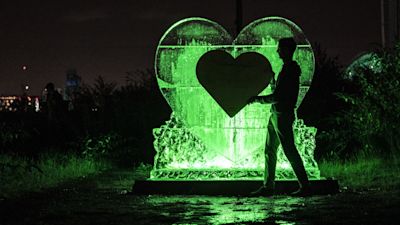Insight
The future is green but it is in all our hands to ensure it stays this way

Words by climate scientist, Dr Emily Shuckburgh
I have participated in a number of scientific field campaigns in the polar regions and they are always characterised by a mixture of elation – as scientific discoveries are made, disappointment – as instruments fail or weather conditions disrupt, exhaustion – after days or weeks of long shifts, and friendship – made through working together in a common cause. A COP, it turns out, is rather similar. The Glasgow Climate Pact does represent important progress. The scientific underpinning is there.
It rightly expresses alarm and utmost concern at the impacts of climate change that are already being felt around the world, it explicitly recognises that further impacts will be much lower at 1.5C temperature increase than 2C and states that this means reducing global carbon dioxide emissions by 45% by 2030, relative to the 2010 level and to net zero around mid-century, as well as deep reductions in other greenhouse gases. When I arrived in Glasgow, I visited the Arctic Basecamp where an iceberg had been brought from the North.
It stood as a magnificent, glistening edifice, which rather rapidly melted over the two weeks to become nothing more than a small ice cube. The symbolism of the world melting while leaders argued about “phasing down” rather than “phasing out” coal could not have been stronger.
The country level commitments that have been put forward to-date are welcome but simply not sufficient to keep temperature rise to 1.5C.
That could mean hundreds of millions of additional people exposed to the impacts of climate change and poverty, it could mean the loss of much of our natural world including virtually all coral reefs, and it would risk catastrophic events such as the demise of the vast ice sheets covering Greenland and West Antarctica.
Very importantly, therefore, the Glasgow Climate Pact requests countries to revisit and strengthen their 2030 emissions reduction pledges by the end of 2022.
During the first week of COP26, various commitments were made by countries on finance, deforestation, methane, the end of public finance for fossil fuel, and electric vehicles. These must now be translated into real policy and incorporated into new, strengthened country commitments.
That said, both within the formal proceedings and outside, it feels that the direction of travel is clear. The exciting innovations – whether advances in clean energy, the application of the latest digital technologies or nature-based solutions – are all focused on advancing a greener world.
The fossil fuel era is at an end. Yes, there is a need to strengthen accountability mechanisms for net-zero going forward to eliminate greenwashing. Yes, the international finance system needs addressing to ensure it is fit to respond to the challenge. But “green” really is the investment opportunity of the century. This really is where the jobs of the future will be. At the same time, there is an urgent need to address the impacts of the climate crisis on the most vulnerable. While it was agreed in Glasgow to double adaptation finance, and although the loss and damage cause by climate change was recognised, so much more is needed to support those most affected.
So where does that leave us after two exhausting weeks? Glasgow has provided an important gateway to a 1.5C world but we now need accelerated action to get there, and the young people from around the world who are crying out for much, much more to be done are absolutely right. In her opening speech, Her Majesty the Queen said that what leaders do for their people today is government and politics, but what they do for the people of tomorrow — that is statesmanship. We must surely all aspire to statesmanship. The future is in all our hands. Let’s ensure it is a green future.